See the New Times Square New Year's Eve Ball Up Close
Find out how you can take home a piece of the old New Year's Eve ball!


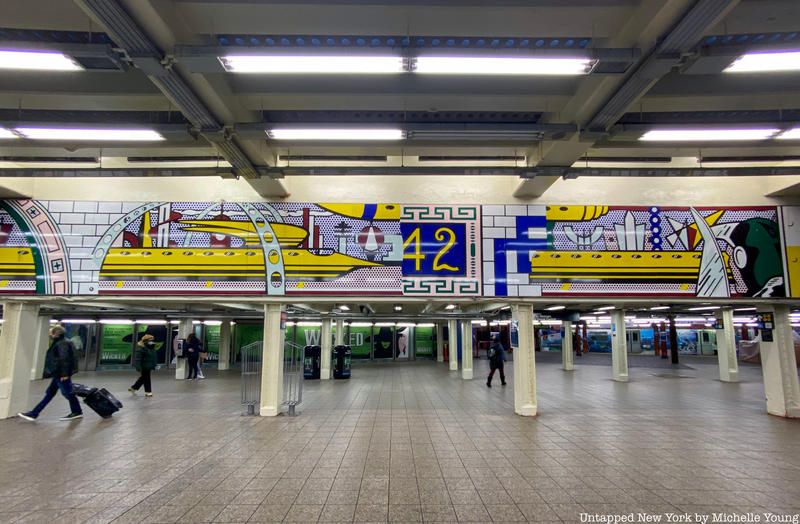
Yes, it’s true. New York City Mayoral candidate (and former U.S. Presidential candidate) Andrew Yang named the Times Square subway station as his favorite station in New York City. It was albeit an odd choice and has become the butt of jokes on Twitter. While it’s generally true that most New Yorkers despise Times Square, we do know some great secrets about it and specifically about the Times Square subway station, which Yang could use to impress. Untapped New York’s Chief Experience Officers says that actually “Times Square is a great station on many levels. It’s a treasure trove of New York City transit art and history.” Still we also suggest Yang hire Fran Lebowitz for his campaign. In Pretend It’s a City, she joked that just to avoid Times Square, she walks all the way up to 125th Street and back down.
We always believe that the. more you know, the more amazed you will be with even the most hated places in New York City. So, without further ado, check out how many of these secrets you might know about New York City’s perhaps second most hated station (after Penn Station), the Times Square subway station!
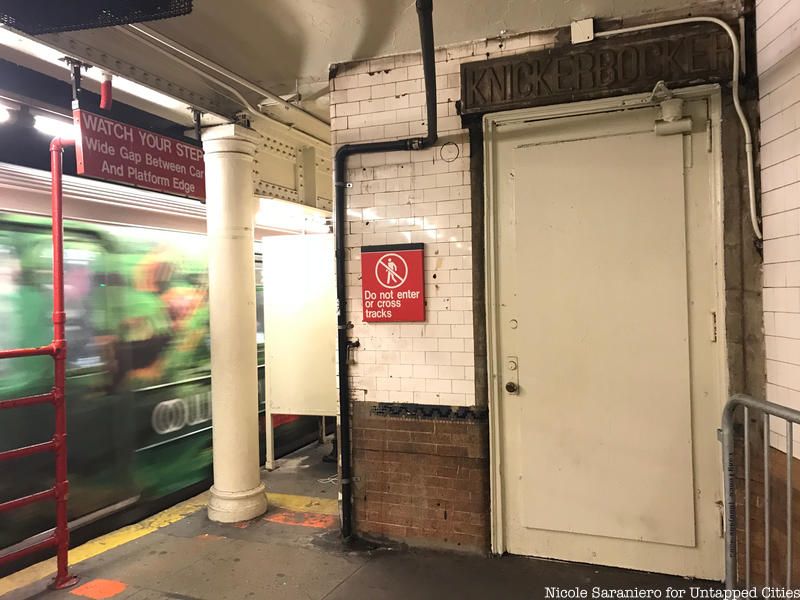
From the dawn of the subway system, direct access to was a major perk. Cultural buildings like Clinton Hall, iconic buildings like the Woolworth Building, and department stores like Wanamakers and Loeser’s could boast direct access to stations like Astor Place. When places like these closed or were torn down, doorways and corridors were left untravelled and eventually blocked off. An example of this can be found inside the Times Square subway station which was once connected to the Knickerbocker Hotel. Near the shuttle to Grand Central Terminal, at the end of Track 1, you can see a door that once led to the lowest level of the famed hotel’s restaurants and bars. Another similar sign, though losing much of its original splendor, is located at one of the exits close to the Knickerbocker.
The Knickerbocker Hotel opened in 1906 on land owned by John Jacob Astor IV. From the beginning, the lavish hotel was a popular destination, thanks especially to its location in the booming area of Times Square and its subway level entrance which clearly advertised it to downtown IRT riders. The corridor leading from the subway into the hotel, was also decorated with heraldic banners and settees, according to a description from the New York Times in 1906. Inside the tunnel today, which is closed off and used for storage, there are some architectural remnants of the former splendor found in the decaying decorative plasterwork and stenciling on the columns. The original hotel closed in 1920 and for years the Knickerbocker was used as office space. It was reopened as a hotel in 2015 but unfortunately the tunnel did not reopen with it.
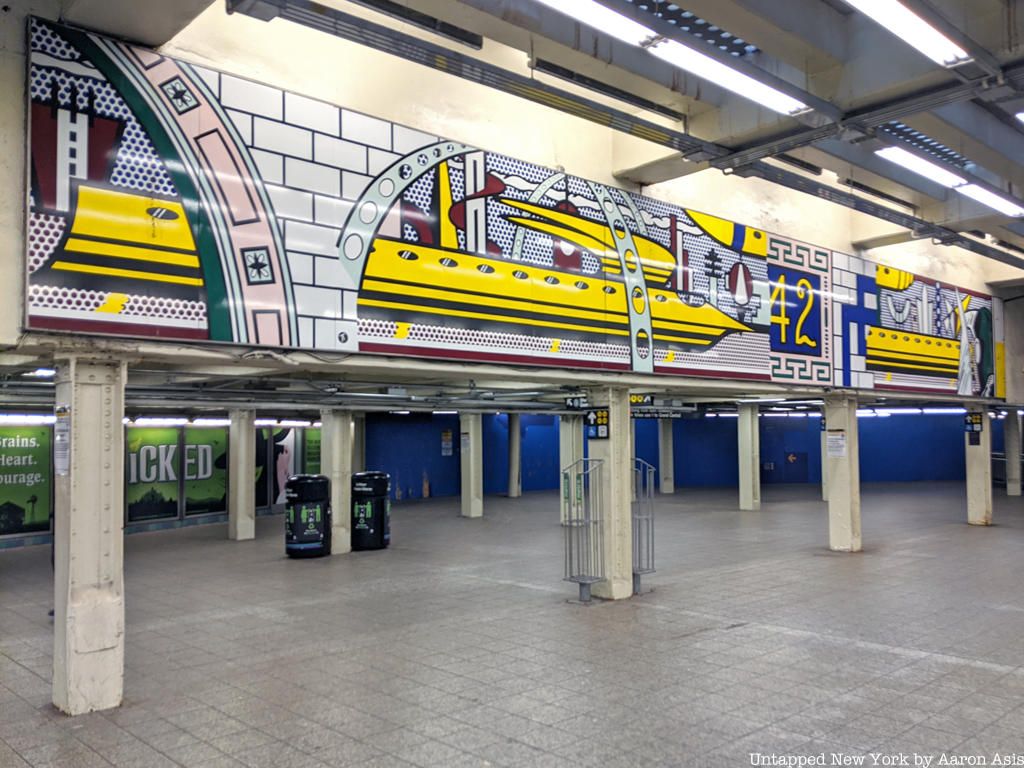
You’ve probably walked through the Times Square-42nd Street subway station for years without realizing that there was an incredible example of Pop Art located there. As you walk from the N/R/Q to the 1/2/3 (the old BMT trains to the IRT trains) pause for a moment, look up, and you’ll be amazed by what you see.
Times Square Mural was designed by Roy Lichtenstein in 1994, though it was not installed until 2002. It consists of 16 panels and was a gift from the artist to the people of the City of New York. The Mural is reminiscent of Lichtenstein’s other works, which can be seen in many of the City’s museums. It is one of at least two currently owned, and displayed, by the City.
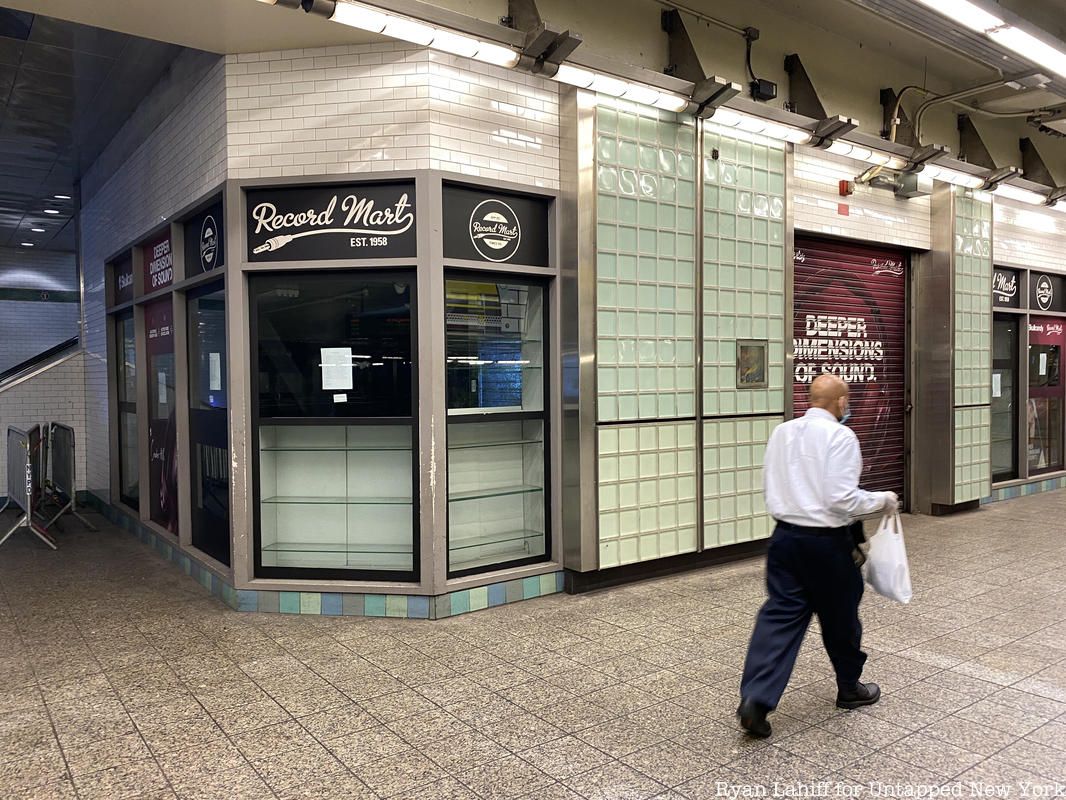
Beneath the bright colors of the Lichtenstein mural inside the Times Square subway station, you could always find a subway musician performing in the open space between the shuttle and the 1/2/3 lines, along with Record Mart, the record store that was also Manhattan’s oldest and a fixture on every New Yorker’s commute. It closed during the pandemic sadly.
The glass display cases showed the latest products, including equipment you could buy there like headphones, stereo equipment, cameras and more. And the goods usually spilled out in front of the entrance with stands holding postcards and posters for sale. You could still find LPs for sale inside. The store actively bought previously owned LPs, CDs and DVDs and they had regular, devoted fans who would pop in. Record Mart had a particularly acclaimed curation of Latin music.
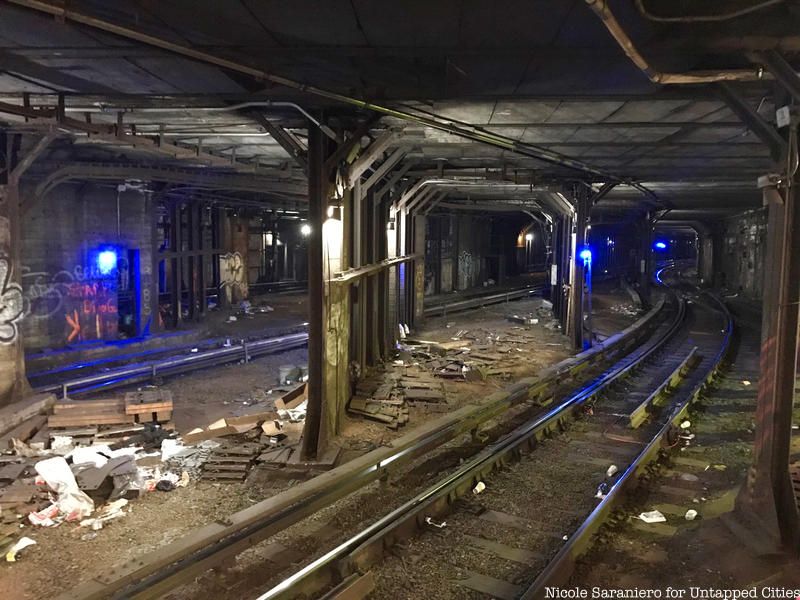
Riders taking the shuttle from Times Square to Grand Central Terminal may be perplexed to notice that the tracks are numbered 1, 3 and 4. There is no Track 2. This is because what would have been Track 2 was covered over to make a platform for Track 3. When the station was originally built, there were two local and two express tracks. Track 2 was a downtown express track on which trains would bypass Times Square station. Track 3 was the former northbound track, while Tracks 1 and 4 were local tracks.
These tracks offered a continuous ride north from the very first station at City Hall Station to the terminus at 145th Street and back again until 1918. At that time, Track 3 was converted from an express track to an additional local shuttle track between Times Square and Grand Central Terminal. Track 2 was covered over, originally by a wooden platform which was replaced by a concrete one decades later, so riders could access the newly local Track 3. You can still see the path that the original four tracks would have taken if you walk to the end of the platform. There are four distinct arches that run almost perpendicular to current tracks, and show the curved paths the original lines once traveled. While two of the three shuttle tracks terminate here, you can actually see that Track 4 continues on and connects to the northbound track of the 1 train. The track is currently spanned by a pedestrian bridge and trains do not usually continue through that way.
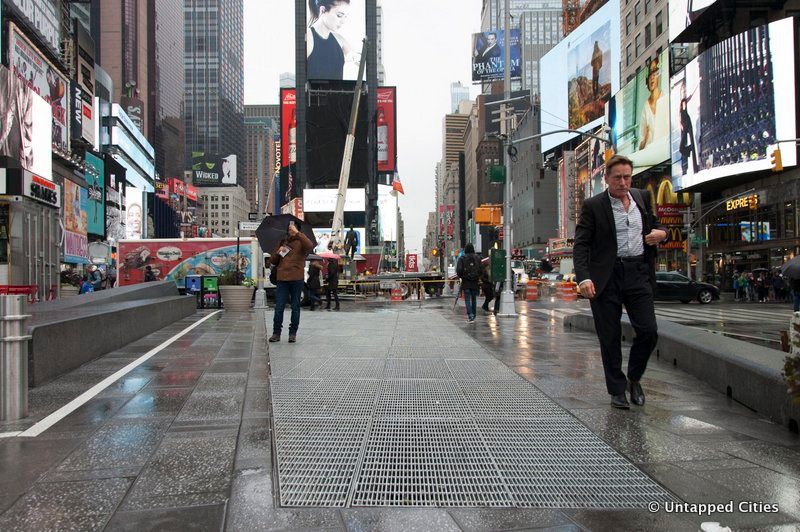
Though artist Max Neuhaus’ sound installation Times Square is experienced outside of the subway, it deserves a mention on this list. Most people will walk right over the piece without even realizing they have just stepped on a piece of art that has been part of New York City since 1977. It was also recently restored. Those who do stop to listen will be treated to a unique auditory experience
As you walk around different areas of the subway ventilation grate, new sounds emerge. These noises are created by a machine below the surface that amplifies sounds from the various chambers of the subway vent underground. Neuhaus explained, “What delighted me was in fact these short tunnels over here because each one has its own resonance and is a little different in length. The sound that is heard on the surface isn’t just the sound that I’m putting in here, it’s what the sound does to this chamber.” This site-specific sound sculpture is a hidden gem in the center of Times Square, located between Broadway and 7th Avenues (45th & 46th Street).
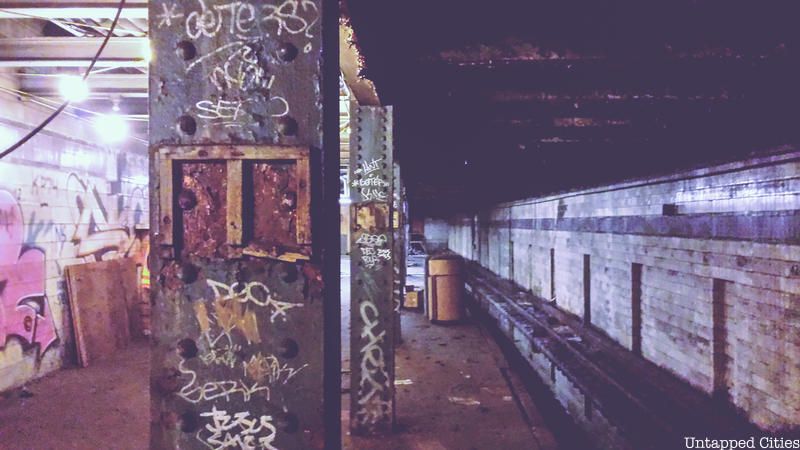
This is the lower level of the A/C/E track although it never operated as part of the IND or IRT system. It was used between 1959 and 1981 as the origin for the special Aqueduct Racetrack train. The entrances had been long sealed and one platform was located underneath the downtown local track, another beneath the island platform. Portions of the tunnels in this abandoned level were converted into the new 7 line extension to Hudson Yards.
You can discover many secrets of the NYC subway on our underground tour of the NYC subway!
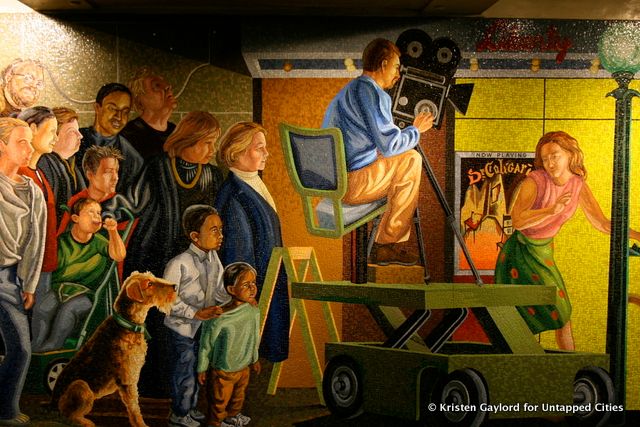
Times Square subway station is filled with artwork: pieces by five artists, more than any other station. Tucked away by the 41st Street exit is Jack Beal’s The Return of Spring / The Onset of Winter (2001/2005). The artist has said that the mural is a modern take on the classical myth of Persephone, who had to live part of every year underground with her abductor/husband, Pluto/Hades. Her mother Demeter, goddess of the harvest spent those months in despair and seclusion, affecting the agricultural seasons. That context makes the mosaics richer; initially, I had just been tickled by the unusually interested facial expressions of the New Yorkers as they watched the film shoot, since I’ve only witnessed a range of emotions along the tight spectrum from “Annoyed” to “Livid.”
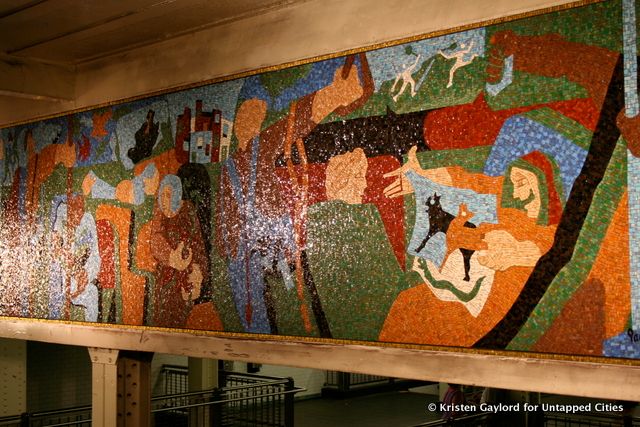
Another figurative mosaic in the station is New York in Transit (2001) by Jacob Lawrence. The twentieth-century African American painter’s style is instantly recognizable: the flattened, graphic shapes; the vivid, fully-saturated colors; the layered yet shallow representation of space. The artist’s last public work, the mosaic represents the similarly layered life of the city—its simultaneity and convergence with gestures and overlap and noise. Also don’t miss Jane Dickson’s “The Revelers” featuring multiple mosaic figures, meant to represent New Year’s Eve revelry.
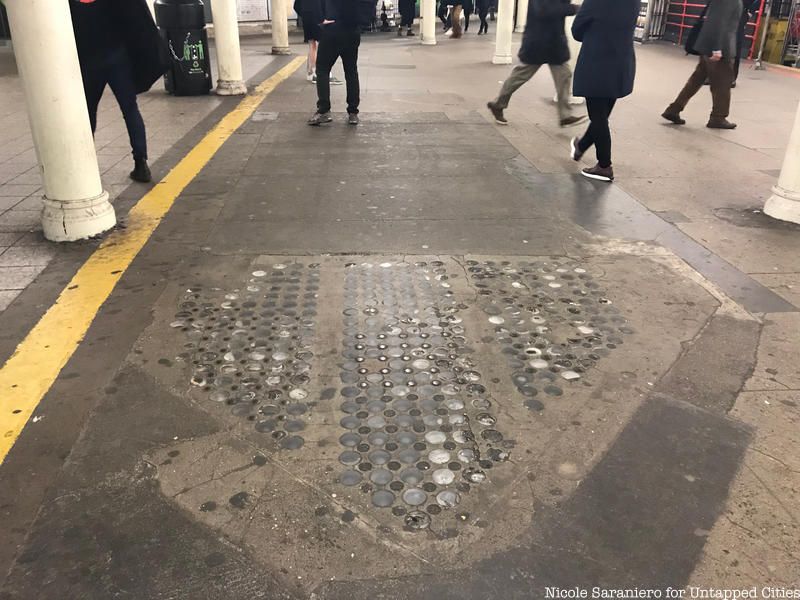
We discovered from an railroad insider who has seen the blueprints of the original station that these glass inserts near the Grand Central shuttle once allowed light into a sealed up staircase. When the station opened the stop was for local trains only and there was a crossover below ground that allowed access to uptown and downtown local trains.
Want to learn more about the history of the New York City subway? Join our upcoming underground tour to uncover the secrets of the system while exploring the stations and lines of Lower Manhattan, starting at the birthplace of the system in City Hall Park.
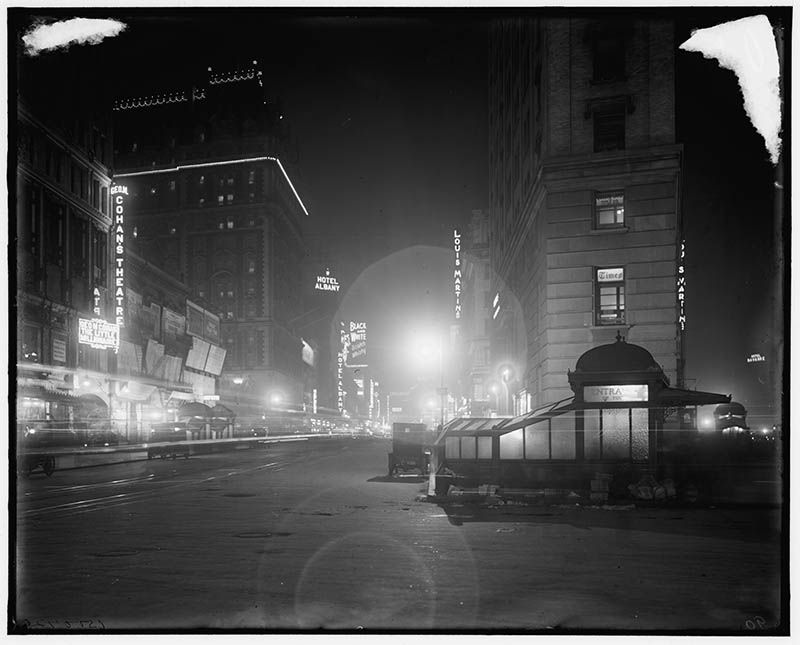
When the subway system first opened in 1904, many stations along the IRT line had these cast iron and glass subway entrances. This entrance sat in front of the Times Building (now 1 Times Square) and had a newsstand in front. Other similar entrances were located around Times Square.
No original ones exist anymore but a replica can be found at Astor Place, added in the 1986 restoration of the station.
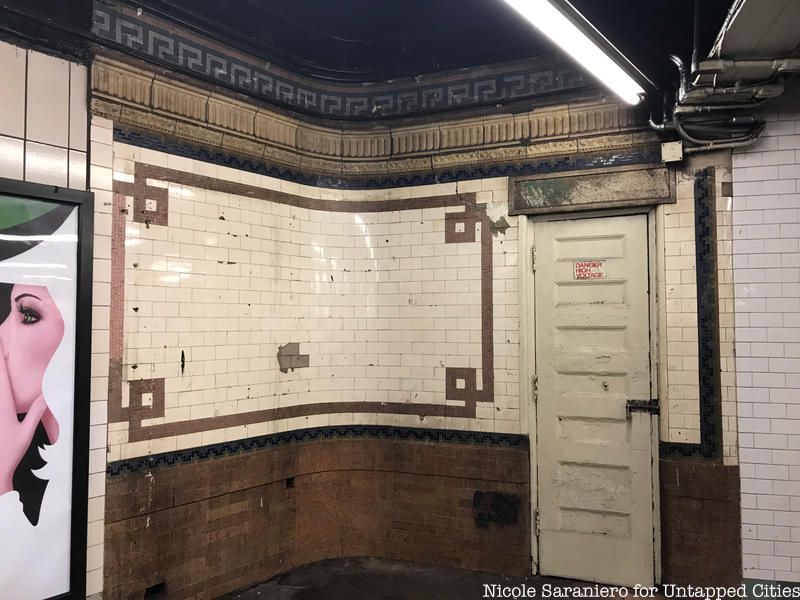
When tasked with designing the original twenty-eight subway stations of the IRT, architects Heins and LaFarge had little to work with in terms of the architectural structure of the stations. Unlike train stations, the subway stations were below ground and therefore not stand alone structures. The designing duo basically had to take an enclosed industrial setting with narrow platforms and make it pleasant for subway riders. Most of the architectural work they did inside the stations was ornamental.
In the Times Square subway station, you can see bits and pieces of Heins and LaFarge’s decorative detailing in the form of mosaic tiles, terra cotta cornices, and walls covered in a combination of white tiles and iron-spot brick. Throughout the original twenty-eight stations there are great examples of original mosaic work that still exist. When possible, Heins and LaFarge drew on the history of the subway station’s location to inspire the design. For example, there is a Dutch house in the Wall Street station which represents New York City’s early colonial foundations, and the massive, terra cotta murals inside the Fulton Street Station pay homage to Robert Fulton, the man who developed the first commercially successful steamboat.
In the Times Square Station, you can notice that the round columns which line tracks 1 and 4 are different than the square steel beams you see on the rest of the platforms. That is because those rounded columns were part of the original rider platforms. In the image below, you can also see some decorative relief-work on the ceiling.
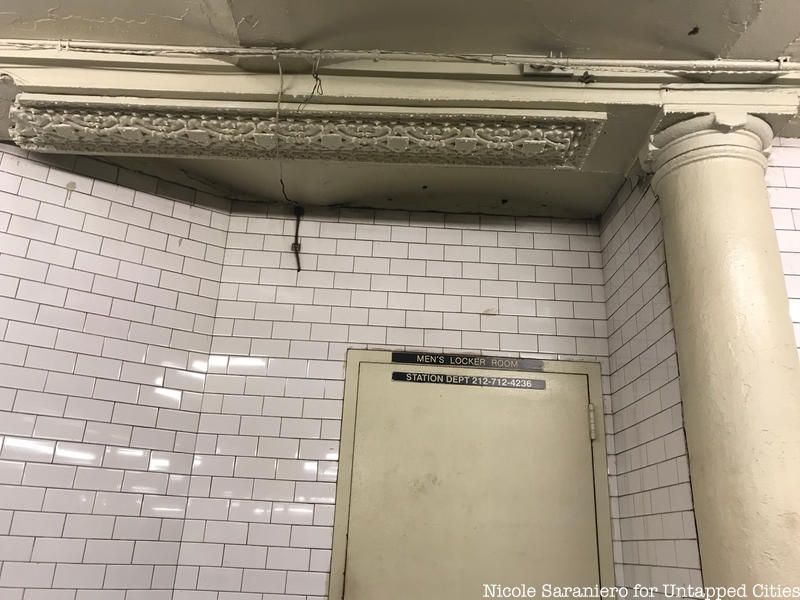
Spread across small sections of the shuttle Tracks 1 and 4 you can see red iron fences with small globes atop the posts. These fences are likely originals from the 1904 station.
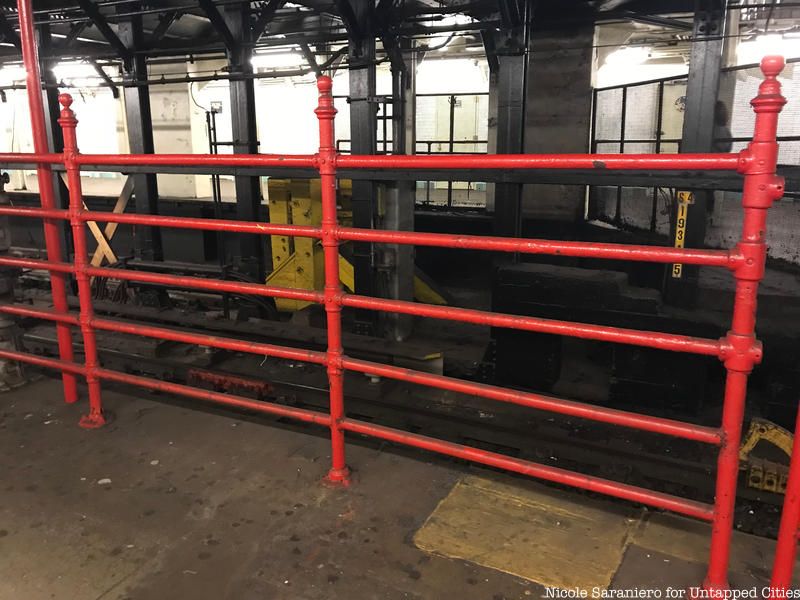
Since subway stations were underground, the structures Heins and LaFarge designed for the system were aboveground cast iron, wire and glass kiosks and brick and stone shelters control houses. Only three of Heins and LaFarge’s original control houses still exist and can be found at Atlantic Avenue (next to the Williamsburgh Savings Bank), Bowling Green and 72nd Street.
You can discover many secrets of the NYC subway on our underground tour of the NYC subway!
Subscribe to our newsletter